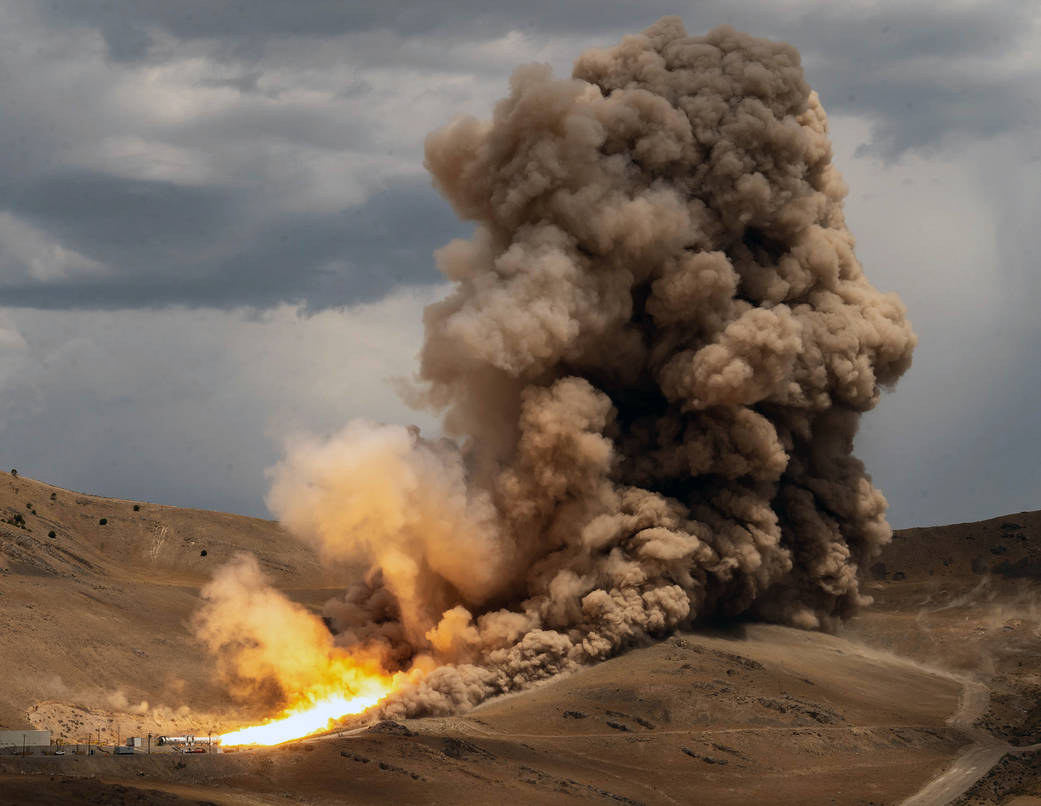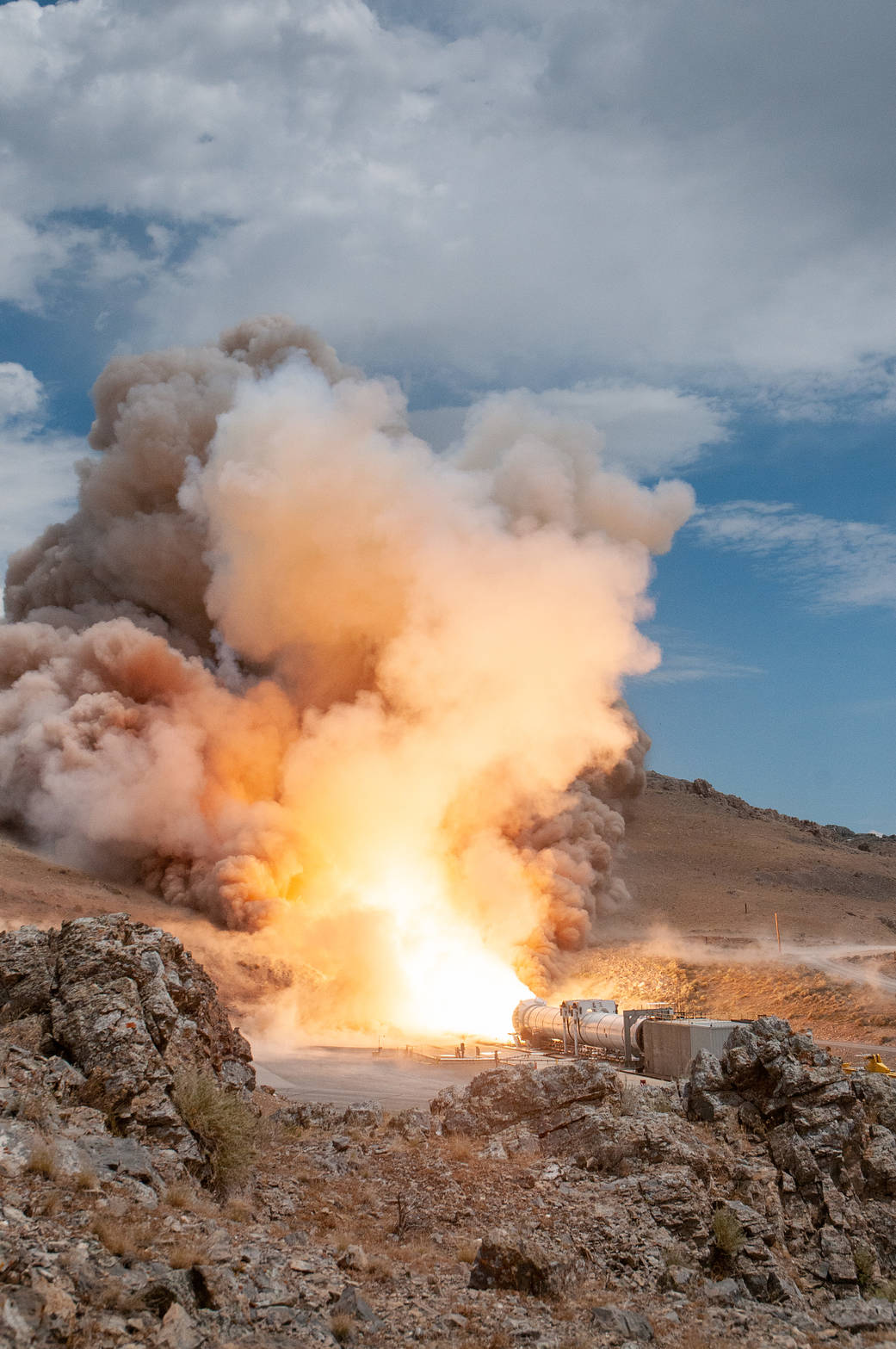Teams from NASA’s Space Launch System (SLS) Program and Northrop Grumman successfully fired a ground-based version of a booster for NASA’s mega Moon rocket at Northrop Grumman’s test facility in Promontory, Utah, July 21.
Secured horizontally in a test stand, the single five-segment booster motor fired for just over two minutes and produced 3.6 million pounds of thrust. The booster for the test, called Flight Support Booster-2 (FSB-2), is the same size and has the same power as a booster used for launch. Together, the twin solid rocket boosters on SLS produce more than 75% of the initial thrust for an Artemis launch.

NASA and Northrop Grumman, the SLS booster lead contractor, are using the test data to evaluate improvements and new materials in the boosters for missions after Artemis III.
“The power we have felt from just a single booster motor here in Utah is just half of what we will feel for an Artemis launch,” said Dave Reynolds, SLS booster deputy manager at NASA’s Marshall Space Flight Center in Huntsville, Alabama. “Artemis I is just the beginning of a new era of space travel, the work for future Artemis missions continues. Designing boosters for those future missions relies heavily on the data we get from these test firings because we are leveraging off of what we learn from these different materials and processes that are being used on the boosters for early Artemis missions.”
The latest booster firing demonstrated the performance of a new motor ignition system and thrust vector control system. It also tested new motor components, materials, and processes that may be used to replace obsolete materials and also in the development of the next generation boosters under the booster obsolescence and life extension effort that will support Artemis IX and beyond.
“Today’s successful FSB-2 test reaffirms our commitment to manufacturing the optimal solid rocket motors to support SLS and NASA’s Artemis deep space missions,” said Jeff Foote, senior director of NASA Programs, Northrop Grumman. “The initial demonstration of next-generation components enables us to acquire early learning for the boosters that will support the heavy-lift performance and greater payload capacities.”
The SLS rocket and NASA’s Orion spacecraft completed their final test for Artemis I, wet dress rehearsal, and engineers are preparing to launch and fly the rocket and spacecraft later this year. Through Artemis missions, NASA will land the first woman and the first person of color on the Moon, paving the way for a long-term, sustainable lunar presence and serving as a steppingstone for future astronaut missions to Mars.























